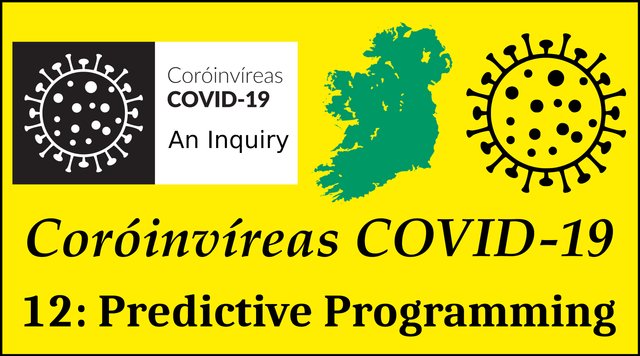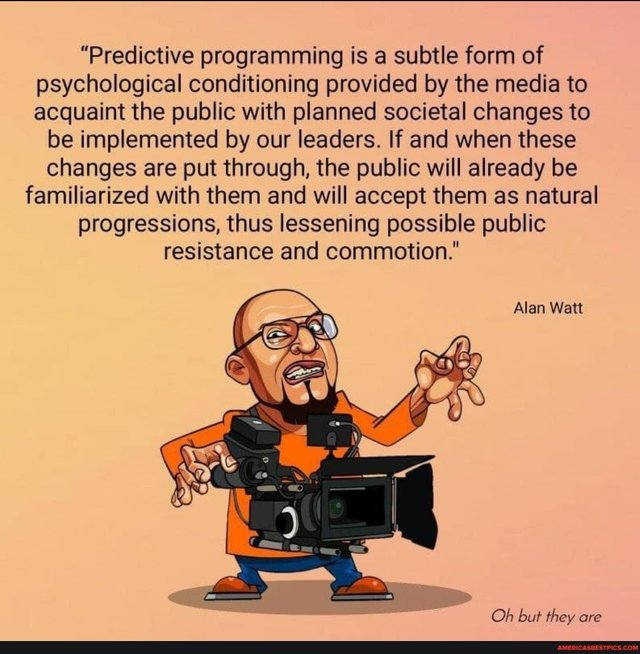
Bats and Wet Markets
In the early stages of the unfolding pandemic, it was widely reported that ground zero for the outbreak was a “wet market” in Wuhan City—Huanan Seafood Wholesale Market—where the deadly coronavirus probably spread to patient zero from a bat. This story was so widespread in the mainstream media that one might easily have assumed that it was part of the official narrative. But this is not the case and subsequent research has knocked several holes in this story:
Many of the early cases were associated with the Huanan market, but a similar number of cases were associated with other markets and some were not associated with any markets. Transmission within the wider community in December could account for cases not associated with the Huanan market which, together with the presence of early cases not associated with that market, could suggest that the Huanan market was not the original source of the outbreak. Other milder cases that were not identified, however, could provide the link between the Huanan market and early cases without an apparent link to the market. No firm conclusion therefore about the role of the Huanan market in the origin of the outbreak, or how the infection was introduced into the market, can currently be drawn.
The molecular epidemiology and bioinformatics working group examined the genomic data of viruses collected from animals. Evidence from surveys and targeted studies so far have shown that the coronaviruses most highly related to SARS-CoV-2 are found in bats and pangolins, suggesting that these mammals may be the reservoir of the virus that causes COVID-19. However, neither of the viruses identified so far from these mammalian species is sufficiently similar to SARS-CoV-2 to serve as its direct progenitor. In addition to these findings, the high susceptibility of mink and cats to SARS-CoV-2 suggests that additional species of animals may act as a potential reservoir. (WHO 7)

It now appears that neither bats nor pangolins were being sold at Huanan Seafood Wholesale Market, as even the mainstream media have had to admit (The Sun):
Here we document 47,381 individuals from 38 species, including 31 protected species sold between May 2017 and November 2019 in Wuhan’s markets. We note that no pangolins (or bats) were traded, supporting reformed opinion that pangolins were not likely the spillover host at the source of the current coronavirus (COVID-19) pandemic ... Our findings illustrate both the range and extent of wildlife exploitation in Wuhan markets, prior to new trading bans linked to the COVID-19 outbreak, along with the poor conditions under which these animals were kept prior to sale. Circumstantially, the absence of pangolins (and bats, not typically eaten in Central China; media footage generally depicts Indonesia) from our comprehensive survey data corroborates that pangolins are unlikely implicated as spill-over hosts in the COVID-19 outbreak. This is unsurprising because live pangolin trading has largely ceased in China. (Xiao et al 1 ... 3)
So what is the origin of the story that a new strain of coronavirus jumped from bat to human and triggered a deadly pandemic? Apparently, it arose when the first laboratory diagnosis was carried out on 30 December 2019 on samples collected from patients at the Wuhan Jinyintan Hospital. This diagnosis is alleged to have identified a novel coronavirus as the pathogenic cause of these cases of PUE:

Three bronchoalveolar-lavage samples were collected from Wuhan Jinyintan Hospital on December 30, 2019. No specific pathogens (including HCoV-229E, HCoV-NL63, HCoV-OC43, and HCoV-HKU1) were detected in clinical specimens from these patients by the RespiFinderSmart-22kit. RNA extracted from bronchoalveolar-lavage fluid from the patients was used as a template to clone and sequence a genome using a combination of Illumina sequencing and nanopore sequencing. More than 20,000 viral reads from individual specimens were obtained, and most contigs matched to the genome from lineage B of the genus betacoronavirus—showing more than 85% identity with a bat SARS-like CoV (bat-SL-CoVZC45, MG772933.1) genome published previously. Positive results were also obtained with use of a real-time RT-PCR assay for RNA targeting to a consensus RdRp region of pan β-CoV (although the cycle threshold value was higher than 34 for detected samples). Virus isolation from the clinical specimens was performed with human airway epithelial cells and Vero E6 and Huh-7 cell lines. The isolated virus was named 2019-nCoV. (Zhu et al 730)

Perhaps that is all there is to it. And yet ...
Predictive Programming
In 2011 the American moviemaker Steven Soderbergh directed the movie Contagion’ a thriller depicting the outbreak and subsequent course of a pandemic:
The plot concerns the spread of a virus transmitted by respiratory droplets and fomites, attempts by medical researchers and public health officials to identify and contain the disease, the loss of social order in a pandemic, and the introduction of a vaccine to halt its spread. (Wikipedia)
The movie documents the first 135 days of the pandemic, beginning with Day 2. The movie ends with a flashback—Day 1—depicting the initial chain of events that led to the infection of patient zero, Beth Emhoff:
... a bulldozer from Emhoff’s company clears rainforest in China, disturbing bats. One bat finds shelter in a pig farm and drops an infected piece of banana that is then consumed by a pig. The pig is then slaughtered and is prepared by a chef in a Macau casino, who, without washing his hands, transmits the virus to Beth via a handshake. (Wikipedia)

The movie foreshadows the COVID-19 pandemic in many of its details:
The panic buying during the early stages of the emergency.
The conspiracy theorist who allegedly triggers a parallel pandemic of fear and misinformation.
The magical vaccine that will put the evil genie back in the bottle and which is developed in a surprisingly short time.
The widespread use of face masks to control the spread of the virus.
The significance of the reproduction number, R0.
The obsession with hand and fomite sanitation.
The practise of social distancing and self-isolation.
The movie was widely praised by epidemiologists for its accurate portrayal of the science of pandemics. But is this an accurate assessment? For example, it has been well known for decades that the wearing of face masks does little or nothing to control the spread of supposedly contagious illnesses.

In March 2020, the cast of the movie reconvened to create a series of public health informercials (Public Service Announcements, or PSAs), all promoting the WHO- and CDC-approved narrative. Kate Winslet reminded us all to wash our hands, while Matt Damon advised us to stay home and practise social distancing.
Two more PSAs—with Laurence Fishburne and Jennifer Ehle—call on people to listen to public health officials and avoid the spread of misinformation. (Control the Contagion)
Even if Soderbergh was just innocently making a popular movie, it is still possible that Contagion was used by others as a vehicle to carry their propaganda. The movie’s screenwriter Scott Z Burns consulted with representatives of the World Health Organization and with medical experts such as W Ian Lipkin and Larry Brilliant, both of whom have promoted the official COVID-19 narrative. And during the filming of the movie, “experts” were used as on-set consultants.

Prophetic Words
One of the stars of Contagion, Jude Law, has revealed that during the filming of the movie he was told by on-set doctors that it was just a matter of time before a pandemic similar to the one depicted in the movie was a reality:
“On that film were the doctors and virologists advising us, extraordinary men, and they were all saying to us this is a matter of when, not if,” Law said of a potential pandemic. “I remember leaving the whole experience thinking you touch yourself on your face 10,000 times a day, we don’t wash our hands, it was all embedded in me. But it all slowly percolates away.” (Insider)
In the movie, Jude Law plays an irresponsible conspiracy theorist, who spreads fear and misinformation on the Internet. This portrayal of a conspiracy theorist as a clueless parasite is at odds with the discovery of researchers at MIT that “COVID-19 skeptics” were scientifically literate and rigorous in their use of data:
How do COVID-19 skeptics use public health data and social media to advocate for reopening the economy and against mask mandates? We studied half a million tweets, over 41,000 visualizations, and spent six months lurking in anti-mask Facebook groups. Here’s what we found ... It’s certainly tempting to characterize COVID skeptics as simply “anti-science” ... but this would make it impossible to meaningfully understand what they mean when they say “science.” To understand this in more depth, we examined how these groups discuss, interpret, or conduct their own data analysis in order to come to entirely different conclusions.
We discovered that these groups leverage skills and tropes that are the markers of traditional scientific inquiry ... In particular, anti-mask groups are critical about the data sources used to make visualizations in data-driven stories. They often engage in lengthy conversation about the limitations of imperfect data ... Most importantly, many of these anti-mask groups implored their opponents to simply follow the data, as sound data (and their visualizations) are crucial to making informed decisions. In their view, the data simply doesn’t support public health measures like closing schools or asking people to wear masks. (The Data Visualizations Behind COVID-19 Skepticism)
Needless to remark, the authors of this paper consider this extremely dangerous to our democracy. In drawing their conclusions, they even refer to the “attempted coup on January 6, 2021”.

In his 2011 review of Contagion, Roger Ebert was confused by Jude Law’s character:
One aspect of the film is befuddling. Alan Krumwiede (Jude Law) is a popular blogger with conspiracy theories about the government’s ties with drug companies. His concerns are ominous but unfocused. Does he think drug companies encourage viruses? The blogger subplot doesn’t interact clearly with the main story lines and functions mostly as an alarming but vague distraction. (Just stand over there and wave)
Operation Warp Speed
In June 2020, when Contagion was experiencing a new wave of popularity, the movie’s screenwriter Scott Z Burns and one of his consultants, W Ian Lipkin of the Centre for Infection and Immunity at Columbia University, were interviewed by the Irish Times. According to Lipkin, there were only two significant inaccuracies in the movie:
“In retrospect, there are only two things that that were considered inaccurate when it first came out ... One of them was the number of times that you touch your face.” The second was pointed out to him by Anthony Fauci, who said: “‘It’s really very good, [but] the time to the vaccine, it’s never going be that short.’ And I said to him: ‘It has to become that short.” (Irish Times)

In the movie, a safe and effective vaccine is developed and rolled out within 135 days. Prior to the COVID-19 pandemic, no vaccine had ever been developed for a coronavirus disease in humans, and no vaccine had ever been developed and rolled out in less than several years. The earliest vaccine against covid-19 was developed in eleven months.
Is Contagion an example of predictive programming, in which a fictional work of popular entertainment seeds an idea in the public consciousness so that the people will be more receptive to the idea when it is later presented to them as fact? Is predictive programming even a thing? The use of product placement in movies and TV programs to sell commercial products is commonplace. A similar practice to sell ideas to the public is undeniable—there is a long history of embedding political propaganda in movies and TV dramas. But predictive programming goes even further than these practices. Predictive programming implies that the makers of the movie are aware of a specific plan for the future.
Is there any evidence that covid-19 was more plandemic than pandemic? That is what we will be looking at in the next article.

And that’s a good place to stop.
References
- Crystal Lee et al, Viral Visualizations: How Coronavirus Skeptics Use Orthodox Data Practices to Promote Unorthodox Science Online, CHI
Conference on Human Factors in Computing Systems (CHI ’21), May 8–13, 2021, Yokohama, Japan, ACM, New York, NY (2021) - WHO, WHO-Convened Global Study of the Origins of SARS-CoV-2, World Health Organization, Geneva (2021)
- Xiao Xiao, Chris Newman, Christina D Buesching et al, Animal Sales from Wuhan Wet Markets Immediately Prior to the COVID-19 Pandemic, Scientific Reports, Volume 11, Article 11898, Nature Research, Online (2021)
- Na Zhu et al, _A Novel Coronavirus from Patients with Pneumonia in China, 2019 _, The New England Journal of Medicine, Volume 382, Number 8, Pages 727-733, Massachusetts Medical Society, Waltham, MA (2020)
Image Credits
- COVID-19 Poster: © 2021 Dublin Region Homeless Executive, Fair Use
- Greater Horseshoe Bat: © Paolo Taranto (photographer), Fair Use
- Chinese Pangolin: © Sarita Jnawali (photographer), NTNC Central Zoo, Nepal, Creative Commons License
- Wuhan Jinyintan Hospital: © 2017 Wuhan Jinyintan Hospital, Fair Use
- Steven Soderbergh: © Nicolas Genin (photographer), Creative Commons License
- Controlling the Narrative: © Columbia University, Mailman School of Public Health, Fair Use
- W Ian Lipkin: © 2021 University of New England, Fair Use
- Roger Ebert: Jon Kopaloff (photographer), © Getty Images, Fair Use
- Scott Z Burns: © Todd Williamson (photographer), Shutterstock, Fair Use
- Predictive Programming: © America’s Best Pics & Videos, Fair Use
Online Resources
- RIP.ie
- Central Statistics Office (CSO)
- Northern Ireland Statistics and Research Agency (NISRA)
- Irish Government Updates on Covid-19
- Northern Ireland Covid-19 Statistics
- The CIA’s World Factbook
- EUROMOMO
- Our World in Data
- Rational Ground
